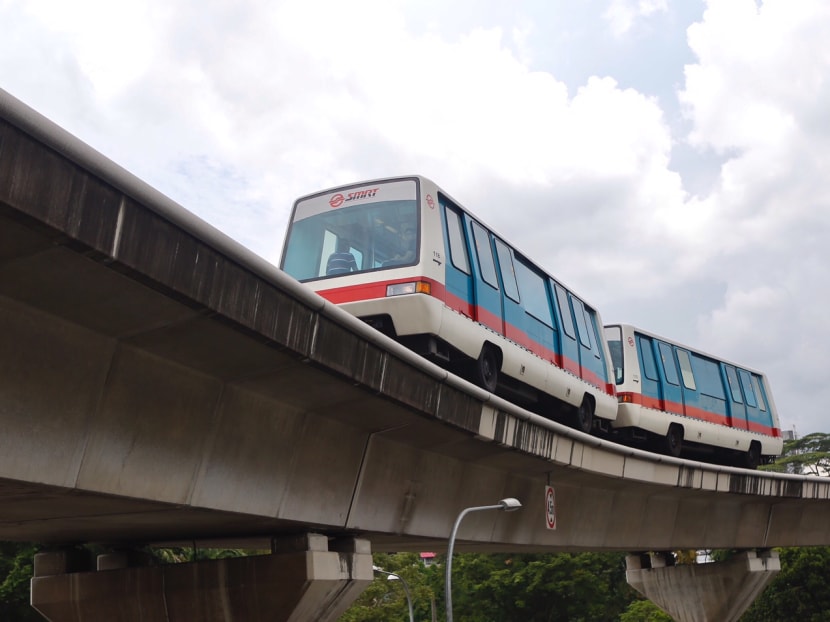Bukit Panjang LRT an ‘afterthought built under political pressure’: Khaw
SINGAPORE — Deriding the Bukit Panjang Light Rail Transit (LRT) system, Transport Minister Khaw Boon Wan on Tuesday (Sept 12) described it as an “afterthought” that was built under political pressure, resulting in a design that makes for uncomfortable rides.
SINGAPORE — Deriding the Bukit Panjang Light Rail Transit (LRT) system, Transport Minister Khaw Boon Wan on Tuesday (Sept 12) described it as an “afterthought” that was built under political pressure, resulting in a design that makes for uncomfortable rides.
“No LRT is designed that way, in such a masochistic manner, where you force yourself up and down, twist and turn,” Mr Khaw, who is also Coordinating Minister for Infrastructure, said at a ceremony to mark the completion of power rail replacements on the North-South and East-West lines.
Of the few occasions he rode the Bukit Panjang LRT, he added: “I won’t say I enjoyed the ride; it caused me dizziness ... but that’s life.”
Mr Khaw pointed out that, unlike the Sengkang LRT network, which was built as the Sengkang estate was being developed and had a “much simpler” design, the Bukit Panjang LRT was constructed after the town had been built owing to “political
pressure”.
But Mr Khaw was quick to add that the Government was not giving up on the Bukit Panjang LRT, noting that reliability could be improved even before renewal works get under way, though he sought residents’ understanding and patience.
He gunned for the Bukit Panjang LRT’s reliability to improve to 100,000 car-km between delays of more than five minutes by the end of this term of Government — the next general election is due by January 2021.
This would be double what the network achieved in the first half of this year.
Although from time to time, some would suggest scrapping the Bukit Panjang LRT and transiting to an “all-bus” system, Mr Khaw noted that capacity was an issue.
“If an all-bus system can work, why did we bother to even build the LRT?”
In October last year, rail operator SMRT said in a blog post that several options were being weighed to “completely transform” the LRT line, including scrapping the network and returning to the use of buses — though the Land Transport Authority had then said the idea was “not likely to be practical”.
Then, in November, Mr Khaw said the system would be overhauled, rather than ditched. A tender is set to be called this year to fully replace its ageing components and upgrade its systems, although no timeline has been set for this overhaul.
Launched in 1999, the Bukit Panjang LRT has been dogged by problems. Last year, for instance, there were eight major delays lasting more than 30 minutes. In 2015, the line, which has 14 stations in a 10.5km-long loop, was hit by 10 such trip-ups.
In the first six months of this year, two major delays were recorded, with the most recent last Saturday stopping services for more than six hours.
Plans for an LRT system in Singapore were first mooted during a time when Certificate of Entitlement prices were on the rise.
In November 1994, about a month before the Government gave the green light to build an LRT system in Bukit Panjang, then-Communications Minister Mah Bow Tan, who was in charge of the transport portfolio, addressed concerns by Members of Parliament about the rising COE prices by saying the “real issue is ... whether transportation in Singapore is efficient and affordable”.
“The only practical solution for Singapore, which is so short of land, is not more cars but better public transport,” he had said, adding that he had instructed the Mass Rapid Transit Corporation to study the potential of light rail transport, especially as an internal feeder service for
new towns.












